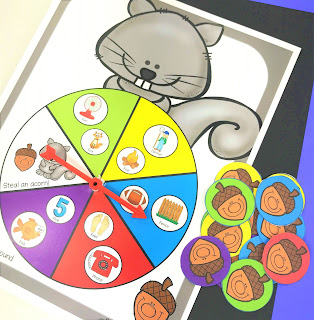.Hi Everyone,
Here
in the Northeast January means cold and SNOW.
I am excited to use snow and snowmen as my theme all month long. It is fun and engaging for my students. We all hope for lots of snow, so we end up with a snow day!!!
January Books
This month I am using 3 books that pair perfectly with snow and snowmen. The first book is The Old Lady Who Swallowed Some Snow . This
series is always a big hit in my therapy room.
It is a cute story about all the pieces you need to create a snowman. We
will be targeting vocabulary skills, rhyming and past tense verbs. When we are done with the book we are going
to create our own snowman. I made
rhyming snowmen so that I could pair it with this book. We are going to generate rhymes and cover the spots.
After reading that book I like to use Snowmen at Night. This is a great book to target verbs. The snowmen eat, drink and play all night long. I love to make snowmen with white dough when I use this book. We then use the snowmen to act out the story. It is a great way to encourage language skills. At the end we create our own book to take home.
The last book I am going to use this month is Sneezy the Snowman . It is an adorable story about a snowman who catches a cold. The children try to warm him up.. I love all the vocabulary that is included on the book: snowman, cardinal, cocoa, hot tub, scarf, melt, build, wind, swirled, shiver, sneeze, coat, ice cream, camp fire and snowflake. It is also a great book for making predictions. If we have snow outside I bring some into the therapy and we make small snowmen. It is fun to watch them melt.
January Games:
Winter
games are always fun. This month I am using Don’t
Break The Ice and my Snowman Spinner Game..
- Don’t Break The Ice is a fun game for articulation and language drills. I like to give my students articulation or language deck cards. Each students practice their target words or language skills and then they take a turn at the game.
- I also use my store’s Snowman articulation and game spinners. They target articulation, verbs, and vocabulary skills. Each student collects snowballs as they play the game. We use the snowballs to create snowmen and snow forts. I use this all month when I have a few minutes left at the end of the session.
These are some of my favorite January therapy activities. I hope everyone has a great January.
















